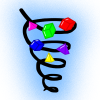 |
Jolt Physics
A multi core friendly Game Physics Engine
|
 |
Jolt Physics
A multi core friendly Game Physics Engine
|
#include <ContactListener.h>
Public Member Functions | |
| virtual | ~ContactListener ()=default |
| Ensure virtual destructor. | |
| virtual ValidateResult | OnContactValidate (const Body &inBody1, const Body &inBody2, RVec3Arg inBaseOffset, const CollideShapeResult &inCollisionResult) |
| virtual void | OnContactAdded (const Body &inBody1, const Body &inBody2, const ContactManifold &inManifold, ContactSettings &ioSettings) |
| virtual void | OnContactPersisted (const Body &inBody1, const Body &inBody2, const ContactManifold &inManifold, ContactSettings &ioSettings) |
| virtual void | OnContactRemoved (const SubShapeIDPair &inSubShapePair) |
A listener class that receives collision contact events. It can be registered through PhysicsSystem::SetContactListener. Only a single contact listener can be registered. A common pattern is to create a contact listener that casts Body::GetUserData to a game object and then forwards the call to a handler specific for that game object. Typically this is done on both objects involved in a collision event.
Note that contact listener callbacks are called from multiple threads at the same time when all bodies are locked, this means you cannot use PhysicsSystem::GetBodyInterface / PhysicsSystem::GetBodyLockInterface but must use PhysicsSystem::GetBodyInterfaceNoLock / PhysicsSystem::GetBodyLockInterfaceNoLock instead. If you use a locking interface, the simulation will deadlock. You're only allowed to read from the bodies and you can't change physics state. During OnContactRemoved you cannot access the bodies at all, see the comments at that function.
While a callback can come from multiple threads, all callbacks relating to a single body pair are serialized. For EMotionQuality::Discrete bodies, during every 'collision step' in a PhysicsSystem::Update, you will receive at most one OnContactAdded/Persisted/Removed call per body/sub shape pair. For EMotionQuality::LinearCast bodies, you may get an OnContactAdded followed by an OnContactPersisted for the same body/sub shape pair. This happens when a body collides both in the discrete and the continuous collision detection stage.
|
virtualdefault |
Ensure virtual destructor.
|
inlinevirtual |
Called whenever a new contact point is detected.
Note that this callback is called when all bodies are locked, so don't use any locking functions! See detailed class description of ContactListener.
Body 1 and 2 will be sorted such that body 1 ID < body 2 ID, so body 1 may not be dynamic.
Note that only active bodies will report contacts, as soon as a body goes to sleep the contacts between that body and all other bodies will receive an OnContactRemoved callback, if this is the case then Body::IsActive() will return false during the callback.
When contacts are added, the constraint solver has not run yet, so the collision impulse is unknown at that point. The velocities of inBody1 and inBody2 are the velocities before the contact has been resolved, so you can use this to estimate the collision impulse to e.g. determine the volume of the impact sound to play (see: EstimateCollisionResponse).
|
inlinevirtual |
Called whenever a contact is detected that was also detected last update.
Note that this callback is called when all bodies are locked, so don't use any locking functions! See detailed class description of ContactListener.
Body 1 and 2 will be sorted such that body 1 ID < body 2 ID, so body 1 may not be dynamic.
If the structure of the shape of a body changes between simulation steps (e.g. by adding/removing a child shape of a compound shape), it is possible that the same sub shape ID used to identify the removed child shape is now reused for a different child shape. The physics system cannot detect this, so may send a 'contact persisted' callback even though the contact is now on a different child shape. You can detect this by keeping the old shape (before adding/removing a part) around until the next PhysicsSystem::Update (when the OnContactPersisted callbacks are triggered) and resolving the sub shape ID against both the old and new shape to see if they still refer to the same child shape.
|
inlinevirtual |
Called whenever a contact was detected last update but is not detected anymore.
You cannot access the bodies at the time of this callback because:
Cache what you need in the OnContactAdded and OnContactPersisted callbacks and store it in a separate structure to use during this callback. Alternatively, you could just record that the contact was removed and process it after PhysicsSystem::Update.
Body 1 and 2 will be sorted such that body 1 ID < body 2 ID, so body 1 may not be dynamic.
The sub shape IDs were created in the previous simulation step, so if the structure of a shape changes (e.g. by adding/removing a child shape of a compound shape), the sub shape ID may not be valid / may not point to the same sub shape anymore. If you want to know if this is the last contact between the two bodies, use PhysicsSystem::WereBodiesInContact.
|
inlinevirtual |
Called after detecting a collision between a body pair, but before calling OnContactAdded and before adding the contact constraint. If the function rejects the contact, the contact will not be processed by the simulation. This is a rather expensive time to reject a contact point since a lot of the collision detection has happened already, make sure you filter out the majority of undesired body pairs through the ObjectLayerPairFilter that is registered on the PhysicsSystem.
This function may not be called again the next update if a contact persists and no new contact pairs between sub shapes are found.
Note that this callback is called when all bodies are locked, so don't use any locking functions! See detailed class description of ContactListener.
Body 1 will have a motion type that is larger or equal than body 2's motion type (order from large to small: dynamic -> kinematic -> static). When motion types are equal, they are ordered by BodyID.
The collision result (inCollisionResult) is reported relative to inBaseOffset.